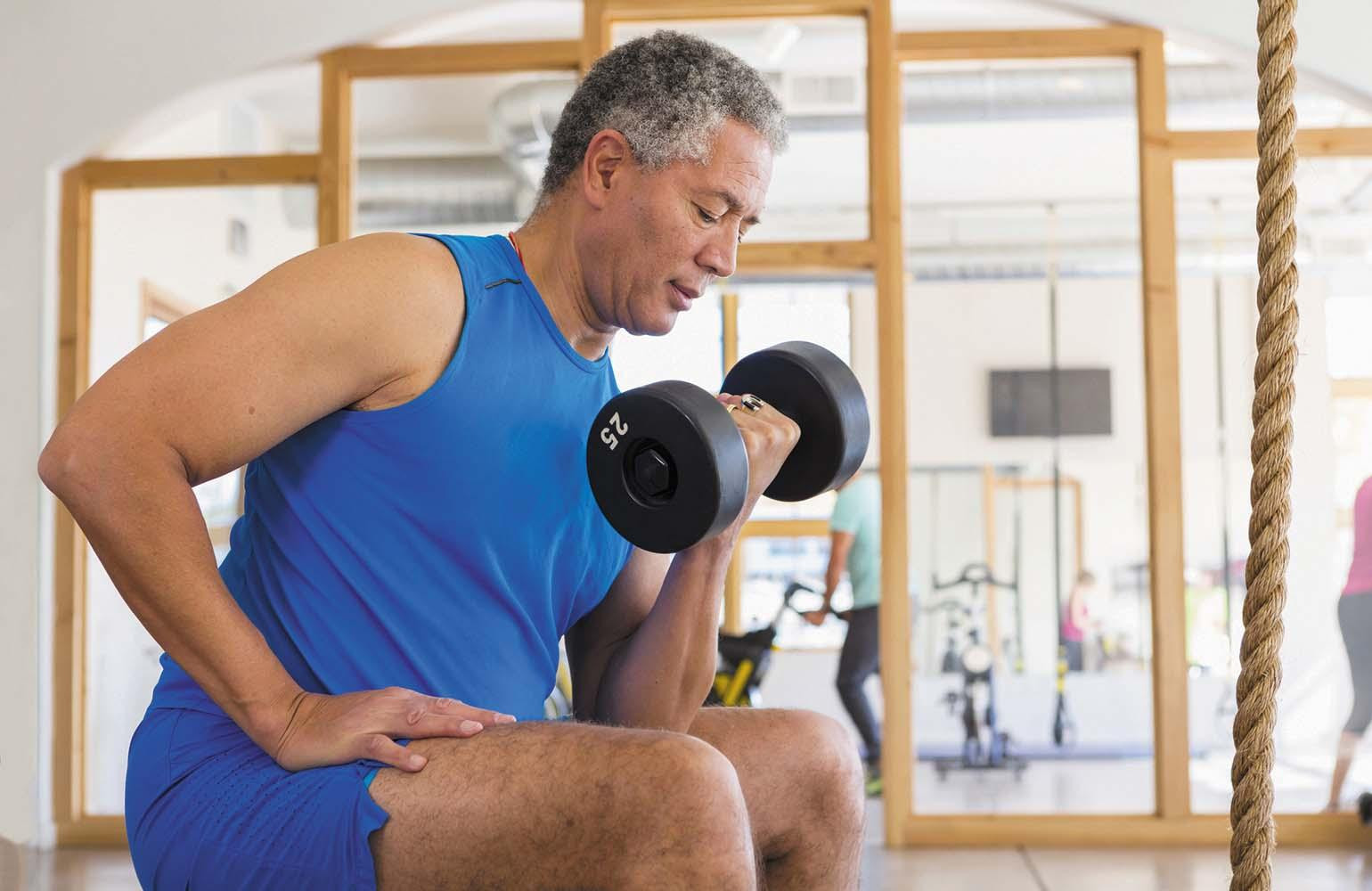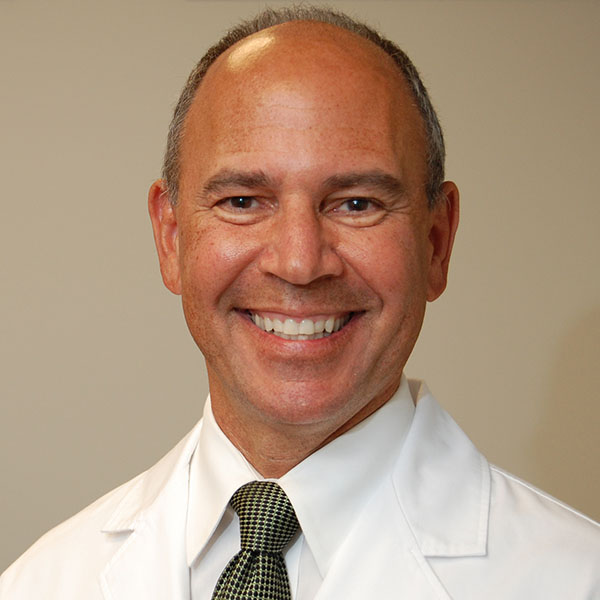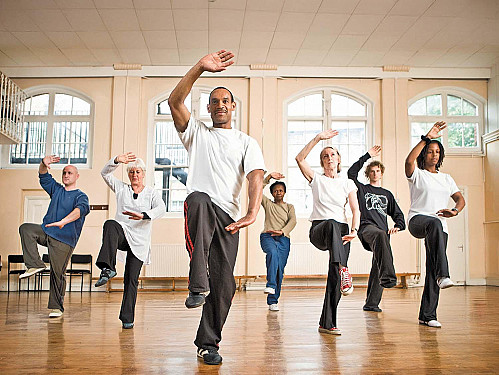How to get rid of belly fat
The key is building more muscle mass.
- Reviewed by Howard E. LeWine, MD, Chief Medical Editor, Harvard Health Publishing; Editorial Advisory Board Member, Harvard Health Publishing

Look in the mirror, and you may notice a slight bulge around your waist. Maybe your pants have grown a bit snug. Even if your total body weight is normal, you could still be carrying around extra belly fat that can increase your risk for serious health issues.
In addition to holding on to belly fat, older men tend to lose muscle mass, a change known as sarcopenia, with most losing approximately 30% of their muscle mass during their lifetimes beginning after age 30.
“When you lose muscle mass, your calorie- and fat-burning machine runs less efficiently, and it’s easier for calories to get stored as fat,” says Dr. Caroline Apovian, co-director of the Center for Weight Management and Wellness at Harvard-affiliated Brigham and Women’s Hospital. “And men don’t store fat in their legs and chest like women. Instead, it goes straight to the belly.”
Different fats
People usually assume “bad” fat around the waist is the type that accumulates just under the skin (subcutaneous fat), which you can pinch and see. “However, this fat, in itself, appears to cause few health issues,” says Dr. Apovian.
A more dangerous type of fat is one you can’t see: visceral fat. It’s stored within the abdominal cavity and surrounds vital organs, including the pancreas, liver, and intestines. Visceral fat makes more of the proteins called cytokines, which can trigger low-level inflammation. It also produces a precursor to angiotensin, a protein that causes blood vessels to constrict and blood pressure to rise.
While visceral fat may account for only about 10% of a person’s total body fat, research has shown that even this amount can increase several heart disease risk factors, such as blood pressure, blood sugar, and total cholesterol levels, as well as raise the risk of fatty liver disease.
Measuring visceral fat
If you can’t see visceral fat, how do you know if you have too much? “The medical field still grapples with the best approach,” says Dr. Apovian. The most accurate method is with an MRI or CT scan, but that can be expensive (and the test is not covered by health insurance if ordered solely to assess visceral fat). Subcutaneous fat can offer a clue, as excess amounts usually indicate higher amounts of visceral fat.
In the past, body mass index [BMI] was the standard way to estimate excess body fat, but it’s not a reliable measure, especially as a gauge of visceral fat. BMI does not account for ethnic differences, nor does it take into account extra weight from muscle and bone mass. (This is why many fit athletes are considered overweight or obese by BMI standards.) A more convenient way to estimate visceral fat is to measure your waist circumference. Place the lower edge of the tape at the top of your right hipbone, then pull the tape around at navel level (not the narrowest part of your torso). Do not suck in your gut or pull the tape tight enough to compress the area.
“In men, a waist size of 40 inches or more almost always indicates excess visceral fat,” says Dr. Apovian. Ideally, men between 5 feet, 6 inches and 6 feet, 6 inches tall should aim for a waist measurement of no greater than one-half their height in inches.
An alternative method is the waist-to-hip ratio: divide your waist measurement by the circumference around your hips. For men, the result should be less than 1.0. (Some references suggest an ideal ratio for men is no more than 0.9.)
Shrinking fat with muscle
It’s no surprise that the best one-two punch for reducing visceral fat is a combination of exercise and a healthy diet. However, the type of exercise matters, as does how you adjust your diet.
“To fuel belly fat burning, you need to build muscle mass, which means increasing resistance exercise,” says Dr. Apovian. Resistance exercises (also known as strength training) consist of upper- and lower-body exercises using free weights (like dumbbells, kettlebells, or barbells), weight machines, resistance bands, or your body weight.
Resistance exercise increases muscle mass through muscle hypertrophy, a process by which microscopic damage to muscle fibers triggers repair and growth. This process stimulates the body to increase the number of myofibrils, long tubular structures inside muscle fibers, making the fibers thicker and stronger.
More muscle tissue can trigger the transition of white fat cells into brown fat cells, which produce energy to create heat and maintain body temperature. “This 'browning’ of white fat cells can turn on the fat-burning machine again and cause visceral fat to shrink and reduce belly fat,” says Dr. Apovian.
Aerobic exercise also plays a role in improving muscle metabolism. Dr. Apovian recommends 30 to 60 minutes of moderate-intensity aerobic exercise three or more days each week, in addition to regular resistance training. “The combination of aerobic exercise and resistance exercise can further tap into stored visceral fat,” she says. The kind of aerobic exercise doesn’t matter — running, swimming, cycling, and brisk walking are all ideal. “The key is to get your heart pumping harder for a majority of the workout,” says Dr. Apovian.
Getting enough proteinTo build muscle, your body also requires sufficient protein, which it breaks down into muscle-generating amino acids. The Recommended Dietary Allowance of protein is 0.8 gram per kilogram of body weight, or about 0.36 gram per pound. That means you multiply your weight by 0.36 to find out your daily protein requirement. For a 180-pound man, that is approximately 65 grams of protein per day. However, research published in the June 2023 issue of The Journals of Gerontology: Series A suggests that older adults looking to increase muscle mass may benefit from consuming up to twice that much (approximately 82 to 130 grams for a 180-pound individual). Protein should make up 40% of your daily calories. An easy way to keep track of this amount is to have each meal and snack contain about 30 grams of protein. Fish, poultry, beans, and yogurt are excellent sources of protein. You can also add protein powders to smoothies, oatmeal, or a glass of water or milk. |
Calories and weight loss
Older men also need to watch their calories, as consuming too much contributes to the accumulation of visceral fat. A 2023 review of 40 trials found that people who followed calorie-restricted diets lost more visceral fat compared with groups not following those diets. Consuming fewer calories can also turn white fat cells into energy-producing brown ones, according to a study published online June 3, 2025, by Nature Metabolism.
However, Dr. Apovian advises against relying solely on cutting calories to reduce belly fat.
“About 25% of any weight loss is also muscle loss, which can affect the performance of the calorie- and fat-burning machine,” she says. “You should manage your calorie intake — moderately active men ages 50 and older need approximately 2,200 to 2,400 daily calories — but for optimal results, you need to prioritize increasing muscle mass.”
Image: © Marc Romanelli/Getty Images
About the Author

Matthew Solan, Executive Editor, Harvard Men's Health Watch
About the Reviewer

Howard E. LeWine, MD, Chief Medical Editor, Harvard Health Publishing; Editorial Advisory Board Member, Harvard Health Publishing
Disclaimer:
As a service to our readers, Harvard Health Publishing provides access to our library of archived content. Please note the date of last review or update on all articles.
No content on this site, regardless of date, should ever be used as a substitute for direct medical advice from your doctor or other qualified clinician.
















